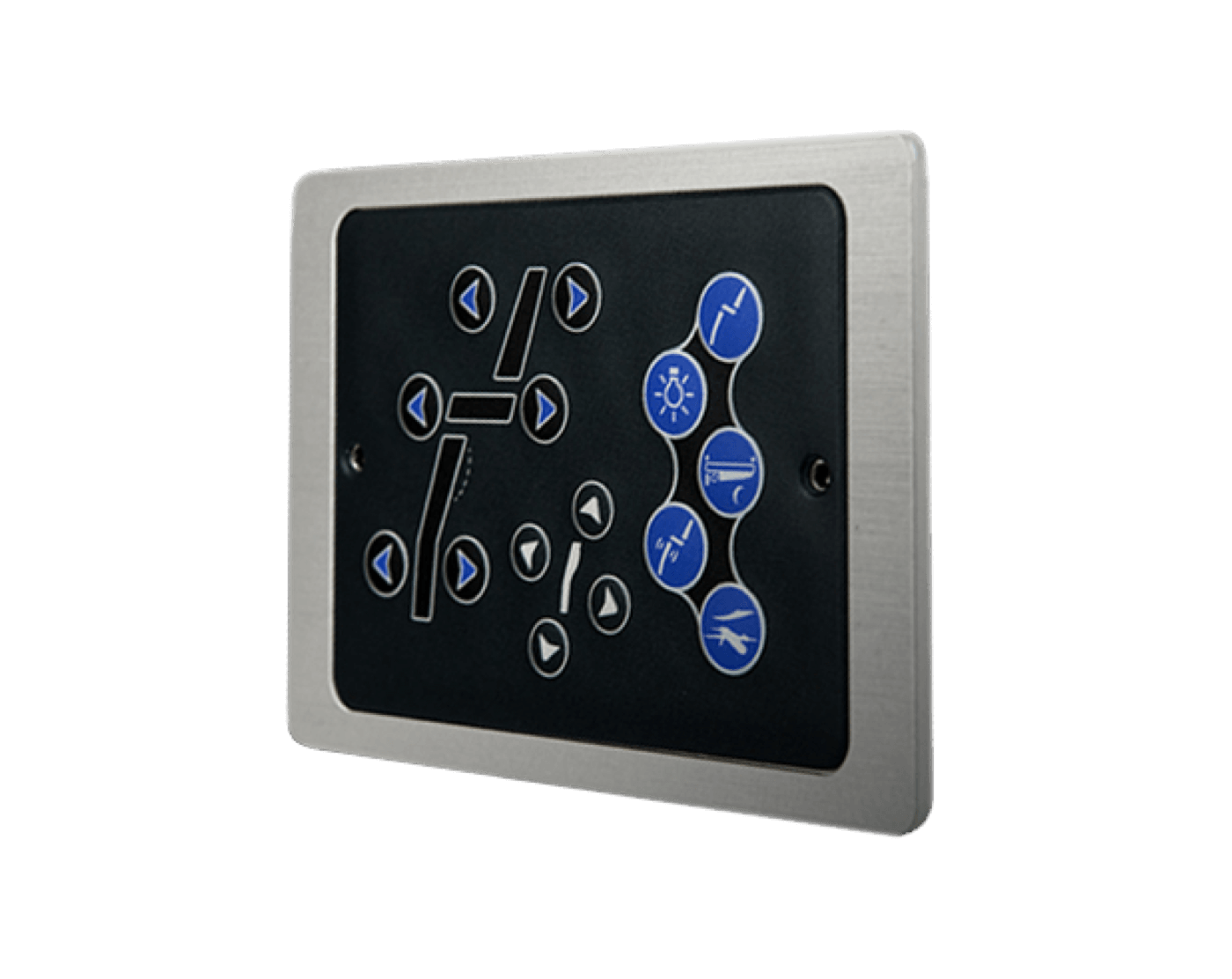Understanding the Significance of Membrane Switches in Interface
Membrane buttons are important elements in the layout of reliable user interfaces, facilitating not just performance but likewise enhancing visual appeal and customer communication. As we check out the future patterns and different advantages associated with Membrane modern technology, it ends up being clear that these buttons are extra than simply parts; they represent a merging of innovation and usefulness.
What Are Membrane Switches?

The spacer layer, which has sticky buildings, enables the separation of the circuit layer from the overlay, making certain that the button remains in a non-activated state up until pressed. When stress is put on the overlay, it presses the spacer layer, linking the void and finishing the circuit in the underlying layer. This style not just lowers the physical area needed for typical mechanical buttons but additionally enhances the sturdiness of the tool, as Membrane switches are generally immune to dirt, dampness, and various other ecological aspects.
Frequently discovered in applications varying from customer electronic devices to medical gadgets, Membrane buttons are integral to modern technology, giving a user-friendly and efficient user interface that aligns with contemporary layout requirements.
Advantages of Membrane Switches
While various button innovations exist, Membrane Switches offer distinctive advantages that make them specifically preferable in different applications. One of the main benefits of Membrane buttons is their portable design, which permits space-saving executions in devices where realty is restricted. Their slim profile not just boosts visual appeal but also promotes light-weight building.
One more significant advantage is their resistance to environmental factors. Membrane switches are normally secured versus dampness, dirt, and pollutants, making them optimal for use popular settings, such as clinical gadgets and industrial tools. This toughness expands the life expectancy of the button, decreasing upkeep expenses and improving integrity.
Moreover, Membrane buttons can be tailored to satisfy certain design demands, including unique graphics and shades that boost individual interaction. Their responsive responses alternatives can likewise be tailored to provide a satisfying user experience. Additionally, Membrane buttons are economical, particularly in high-volume applications, as they can be produced successfully.
Applications in Numerous Industries

In the consumer electronic devices market, Membrane buttons prevail in devices such as microwaves, cleaning devices, and remotes. Their responsive feedback and aesthetic alternatives enhance customer experience while giving a smooth, modern-day appearance. Furthermore, automobile manufacturers use Membrane buttons in dashboard controls and infotainment systems, where room is limited, and customer engagement is crucial.
Furthermore, the industrial market leverages Membrane switches in control panels for equipment and equipment, permitting instinctive operation in often extreme settings. Their resistance to chemicals and moisture ensures longevity and reliability in these applications. Generally, the versatility of Membrane Switches contributes significantly to their prevalent usage, making them essential in various technological domains.
Design Factors To Consider for Membrane Switches

When making Membrane switches, a number of essential factors to consider have to be thought about to make certain ideal performance and Check This Out customer experience. The option of products is important; selecting long lasting, top notch substrates can boost the button's durability and resistance to environmental aspects such as wetness and temperature level changes.
Second of all, the layout of the visuals overlay must prioritize clearness and ease of usage. Symbols and message need to be legible, and the format must assist in instinctive communication (membrane switches). In addition, tactile responses is essential; incorporating a responsive dome or other systems can enhance the user experience by providing physical verification of activation
One more vital aspect is the switch's electrical performance. Designers must guarantee that the conductive traces are correctly created to decrease resistance and prevent signal disturbance. This involves analyzing the required actuation force and ensuring compatibility with the electronic elements they will certainly user interface with.

Future Patterns in Membrane Modern Technology
As innovation continues to development, Membrane switches are positioned to develop considerably, driven by advancements in products and manufacturing strategies. One arising trend is the incorporation of sophisticated materials, such as flexible substrates and conductive inks, which enhance sturdiness and minimize the general weight of Membrane switches. These products not just enhance the tactile reaction but likewise permit the layout of switches that can hold up against harsher environmental conditions.
Additionally, the assimilation of touch-sensitive technologies is changing conventional Membrane Switches into even more interactive customer interfaces. Capacitive touch sensing units embedded within Membrane button panels can supply an extra responsive and instinctive individual experience, aligning with the expanding demand for sleek, contemporary styles in customer electronic devices.
Furthermore, innovations in Read Full Report printing strategies, such as electronic and 3D printing, enable rapid prototyping and personalization of Membrane buttons. This versatility enables makers to react quicker to market demands his explanation and customer preferences.
Lastly, sustainability is becoming a considerable emphasis, with suppliers checking out green materials and procedures. As these fads unfold, the future of Membrane innovation promises boosted performance, visual charm, and environmental duty, strengthening their function in innovative interface throughout different markets.
Conclusion
To conclude, Membrane Switches represent an essential component in the design of interface, integrating functionality with visual adaptability. Their advantages, including durability and resistance to environmental elements, make them suitable for diverse applications across various sectors. Thoughtful style factors to consider improve user interaction and experience. As innovations in innovation proceed, the evolution of Membrane buttons is expected to additional refine customer interfaces, driving advancement and enhancing use in a significantly intricate technological landscape.
Membrane buttons are integral components in the design of reliable individual interfaces, facilitating not just performance but also improving visual charm and user interaction.Membrane Switches offer as a crucial part in different user interfaces, helping with a seamless communication between users and electronic gadgets.While various button modern technologies exist, Membrane Switches deal distinctive benefits that make them especially desirable in different applications.Additionally, Membrane buttons can be customized to meet particular design requirements, including unique graphics and colors that enhance customer communication.In conclusion, Membrane Switches represent an essential component in the design of user interfaces, integrating functionality with aesthetic flexibility.